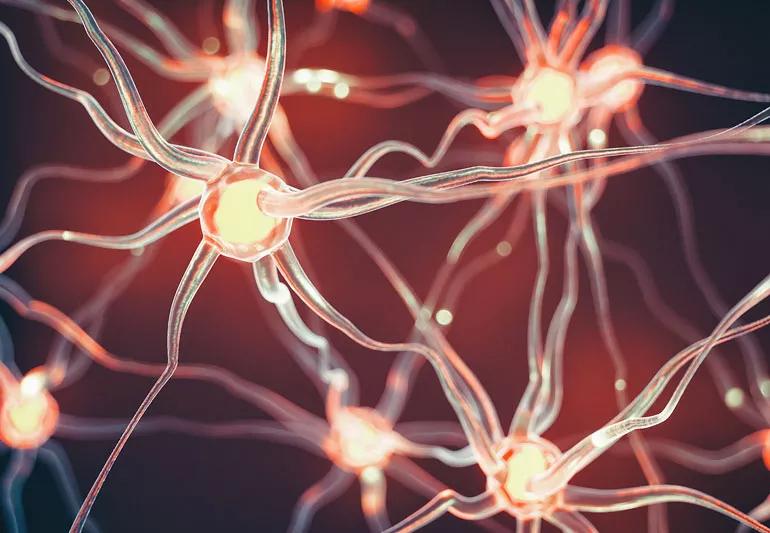Advertisement
Understanding types + how to find relief

“Can you describe your pain?” This will likely be one of the first questions your doctor asks if you complain of chronic pain. Unless there’s an obvious reason for pain, your doctor needs a lot of information to identify the underlying cause. This includes the location, type, intensity and frequency of pain. The doctor is partly trying to determine whether the pain is nociceptive or neuropathic (also called nerve pain), or possibly both.
Advertisement
Cleveland Clinic is a non-profit academic medical center. Advertising on our site helps support our mission. We do not endorse non-Cleveland Clinic products or services. Policy
“This can be tricky because all pain is experienced through the nerves,” says sports medicine specialist Dominic King, DO. Damage to bodily tissues, such as muscles, tendons, ligaments or the capsules around joints, causes nociceptive pain. Nerve receptors adjacent to the damaged tissue, called nociceptors, transmit a pain signal to the brain. This type of pain tends to feel sharp, achy, dull or throbbing.
If you’re experiencing something that feels more like burning, stabbing, or shooting pain ― especially if there also is numbness or tingling ― it’s likely to be neuropathic pain. This means there is direct damage or irritation to a nerve. “It can cause a lightning strike type of electric pain,” says Dr. King.
Nerve pain can arise from a variety of causes, including diabetes, infections (such as shingles), multiple sclerosis, the effects of chemotherapy or trauma. When it comes to orthopaedic issues, nerve pain often stems from a nerve being pinched by nearby bones, ligaments and other structures.
For example, a herniated disk in the spine or a narrowing of the spinal canal (stenosis) can press on a nerve as it leaves the spinal canal. This can cause pain along the path of the nerve. When nerves that originate in the lower spine are affected, symptoms might be felt in the buttocks or down a leg. If the compressed nerve is in the upper spine, the pain and other symptoms can shoot down the arm. Numbness or tingling may also occur because the brain is not receiving a consistent signal due to the compression.
Advertisement
Another common cause of nerve pain is carpal tunnel syndrome. A nerve and several tendons travel through a passageway in the wrist (the carpal tunnel) to the hand. Inflammation in the tunnel can press on the nerve, causing numbness and tingling in the thumb and fingers.
“There are so many orthopaedic conditions that overlap between pain stemming from problems with tendons, muscles, joints and nerves that you need a very discerning physician to do a good physical exam to figure out the cause,” says Dr. King. “I make my determination based on when the patient experiences pain, where the pain is located and what the pain feels like.”
Pain related to joints, such as from arthritis, will feel more like stiffness when going from sitting to standing. With tendon pain, it will feel sore when you push on the affected area. “Nerve pain is more of a burning, fiery pain,” says Dr. King. And it tends to come and go.
“Nerve pain typically gets worse with more and more use and can be associated with numbness,” says Dr. King.
Ultimately, getting the right treatment depends on getting the right diagnosis. For many bone and joint conditions, nondrug treatment will be tried first. Sometimes pain medication is needed. However, neuropathic pain does not respond to drugs commonly used for nociceptive pain, such as nonsteroidal anti-inflammatory drugs.
This article originally appeared in Cleveland Clinic Arthritis Advisor.
Advertisement
Learn more about our editorial process.
Advertisement

These creams that you apply to your skin can actually help reduce localized pain, swelling and inflammation

This satisfying, involuntary act of yawning and stretching helps release tight muscles

Low-level, dull soreness that goes away with rest or physical activity is normal — but if it lingers or worsens, see a healthcare provider

If soaking your feet, disinfecting your shoes and making lifestyle changes don’t do the job, it’s time to talk to a doctor

Genetics, hormones, medications and stress are just a few reasons your feet could be extra funky

While an ultrasound shows your muscles and tendons, an MRI also shows your joint cartilage, bones and heart chambers

Sitting for long hours, like at your desk job, can make your butt sag — among other effects

Research doesn’t show any benefits to wearing copper bracelets — but your experience may vary

If you’re feeling short of breath, sleep can be tough — propping yourself up or sleeping on your side may help

If you fear the unknown or find yourself needing reassurance often, you may identify with this attachment style

If you’re looking to boost your gut health, it’s better to get fiber from whole foods